
The Free Press

This summer I was at Newark Airport, racing down a moving walkway to grab a bottle of water before takeoff. I snatched a Smartwater, scanned it at a self-checkout, and then gritted my teeth at the price: $8.
What a rip-off, I thought. But I know retailers hold us captive at the airport, so with no other options, I swiped my card.
Suddenly another notification flashed in my face: Would you like to add a tip?
The kiosk listed three amounts: 15%, 18%, 20%.
The chutzpah of this robot. Surely it was infected with a virus to think it could ask me, a human, for a tip at a time when inflation has hit record highs.
This is where we find ourselves in 2023. After enduring three years of rising prices, where the cost of ground coffee, gasoline, and other staples has jumped by 20 percent since 2020, the machines are now asking us for spare change.
But we humans can’t pony up, because we are struggling. At least half of people making over $100,000 are living paycheck to paycheck, according to one study. The majority of Americans now have less money than they did before the pandemic. So when a barista looks up at me, as one recently did on a Saturday morning in Brooklyn, and flips a monitor around asking me if I want to add a tip on top of a $6 latte that became $9.08 after the upcharges for oat milk, ice, and tax, my answer is no.
But even so, I could feel the stares of four or five Brooklynites in line behind me, huffing in their ironic carpentry pants and “work” boots. To them, I knew the tipping prompt read like this: Do you care if your comrade eats tonight?
To which my answer is yes. I mean, no. I mean, maybe—but only if the standard were still 10 to 15 percent. Now, a 20 percent tip is considered the floor, with many tip screens urging customers to go 30 percent and up—even though most things cost 20 percent more than they did pre-pandemic.
We can’t all be billionaire Warren Buffett—and even he is said “only” to tip around 22 percent, or 25 percent on a good day.
Turns out I’m not the only curmudgeon out there. The internet is awash with complaints about tipping inflation gone mad. In early August, one online commenter was baffled when they went to pay the $40,000 bill for their home upgrades, and the online form asked if they wanted to show their “appreciation” by adding a 5 to 15 percent tip. The average American doesn’t have a thousand dollars set aside for emergencies, let alone a $6,000 token of gratitude.
Others have bemoaned that online clothing boutiques and discount travel sites are now asking for tips during the checkout process to “show support for the team.”
Then there are the restaurants that demand we cover not just tips, but various service charges too, like “employee wellness fees.” These extra costs, first introduced during Covid, have outlasted the virus. In Washington D.C., some residents were so fed up that they started tracking these charges in a spreadsheet, which now has over 200 entries and counting.
But food deliveries are where tips really take the cake.
This past spring, one courier bemoaned to The New York Times that he was tipped “just” $20 for delivering $388 worth of sushi in Los Angeles.
“It’s hard to fathom how people could have so much money,” Brantley Bush said, “and tip so little.”
That makes sense if you replace the word tip with donate. But in theory, this is a business transaction, not a charity. Twenty dollars isn’t bad when you have to work a full hour at a minimum wage job in Los Angeles to earn $15.50.
Some couriers are even holding orders hostage until the customer forks over a bigger tip. In May, one Reddit user posted that her DoorDash driver sent her almost ten messages in a row, badgering her for a tip after claiming the restaurant made him wait too long for her order. That was after she had already tipped him $5 for what she said was a “small order” from a restaurant less than three miles away.
“As someone who has worked in delivery myself for 5+ years, I find asking for an extra tip in very poor taste and I sincerely hope this is not normal practice for you,” the customer scolded the Dasher.
There’s no denying that the wages from apps like DoorDash can be low (one article claims the base pay is $4 to $10 an order), but this is less a problem for DoorDash customers than the company itself, which reported $2.1 billion in earnings during the second quarter of last year alone.
To be clear, the problem isn’t that I don’t want to tip. I do. But I can’t when it’s coming from the Lyft driver, the bathroom attendant, the hairdresser, and every cashier I meet. While my empathy may be limitless, my funds are not.
So, in a moment when everyone’s feeling the squeeze, how do you turn down these requests with class?
I took my question to Miss Manners, otherwise known as Judith Martin, who for the past 45 years in her syndicated etiquette advice column has been telling us barbarians how to behave better. As it turns out, “the majority” of the questions she receives these days are about tipping or other financial norms. She told me she’s even noticed “tip creep” herself.
“The tip jar is everywhere, including self-service,” she told me, referencing greedy robots like the one I encountered at Newark Airport.
There are two kinds of tipping, she explained. The first is when tips are an expected part of someone’s wages. “The other is where people have just gotten on to this idea, ‘Oh boy, I can get a little extra money this way.’ ”
That second type, she says, is “not anything I have to give in to.”
Miss Manners admits it takes more to live these days, but that’s not the only thing driving tipping inflation through the roof.
“Tipping advice is often given out by the people who expect to receive it,” she adds, “and they're very generous with themselves.”
Sometimes too generous.
Earlier this month, Harrison Snowden, an options trader from Chicago, was kicking off his vacation in Anchorage, Alaska, just grabbing some breakfast for himself and his two friends, when a tipping screen stopped him in his tracks.
Staring him in the face were four suggested amounts: 20%, 30%, 50% and—100%.
Snowden was so stunned by the suggestion he snapped a photograph of the screen to send around to his friends.
“It was shocking,” he said. “It just felt like a huge middle finger. They know no one is going to tip that much.”
In the end, he forked over $3.00. That’s around an 8 percent tip for an order that already cost him a whopping $37.25.
“Had it not been that big of an ask,” he says, “I actually think I would’ve ended up tipping more.”
Olivia Reingold is a writer for The Free Press. Read her recent essay “A Cold Email Got Me My Job—and an Afternoon with Gay Talese,” and follow her on X (formerly Twitter) @Olivia_Reingold.
Become a Free Press subscriber today:


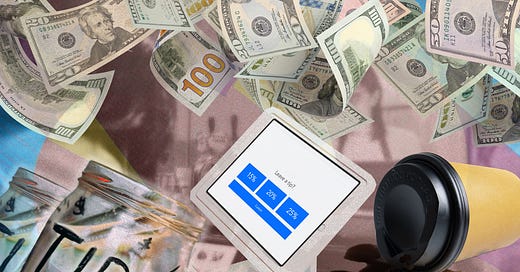


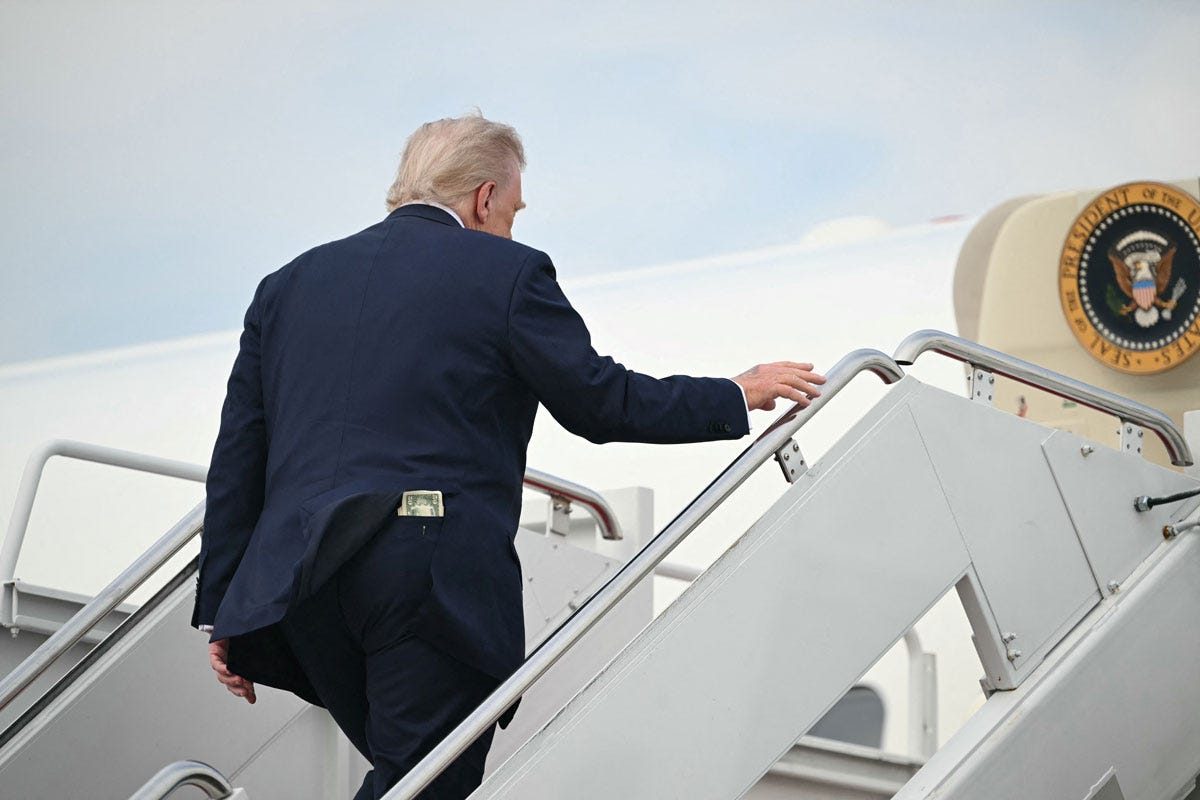

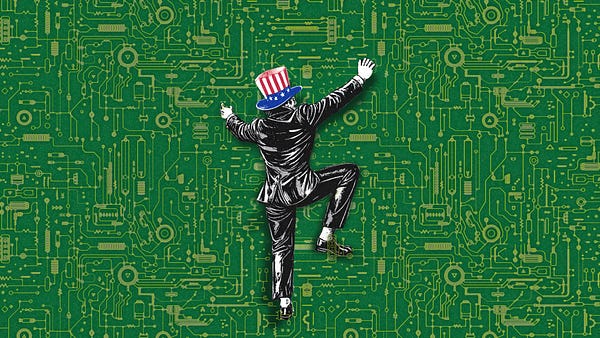

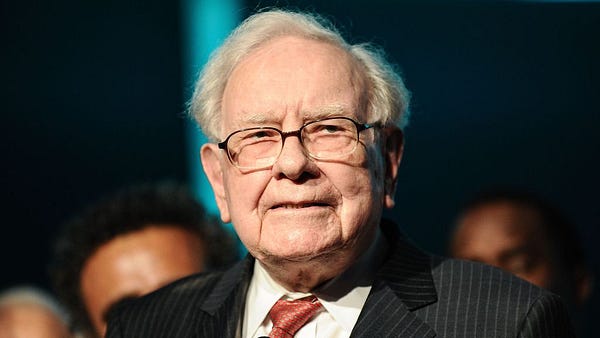

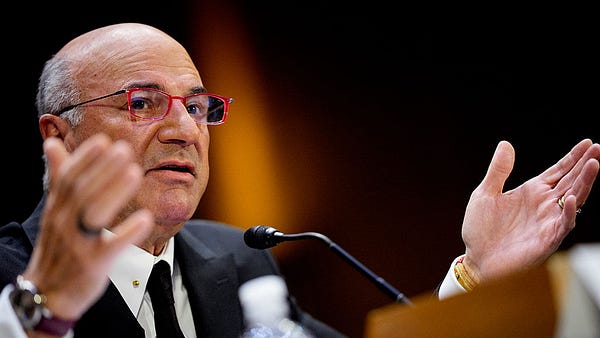

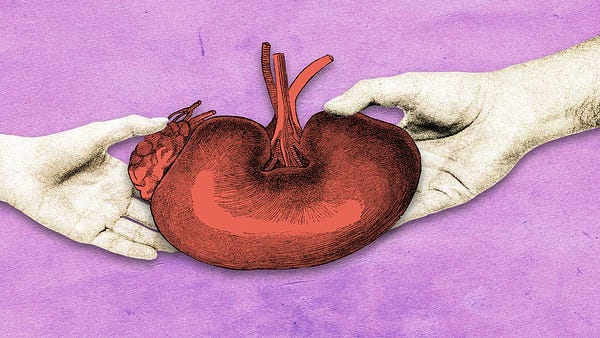


Just give a dollar and if it’s that’s much of a problem for you maybe assess how much you spend on services you don’t necessarily need. You shouldn’t be asked to tip every day unless you’re going to a coffee shop, fast food restaurant and grocery store every day via Uber.
Thank you, Olivia, for addressing what most all of us face daily!
I live in Texas. Our local WallMart, Target & grocery stores only have self checkout now. In fact, if the machine stalls, you may have to holdup the line waiting on an employee to help. An employee, by the way, who acts pissed because you bothered them while they were sitting on a stool texting!
I’m thinking SURELY we should get an invitation to the companies Holiday Parties (don’t say Christmas, don’t want to offend!). I mean, if I am paying higher prices, + have to checkout and bag my groceries + take them to my car and return the buggy inside the store, I feel like the least these Billion dollar corporations can do is put out a few extra cookies for their loyal employees … uh, I mean customers!
Don’t misunderstand (Good Lord, always having to qualify our statements!), I do not mind doing these things for myself, as long as I am able. What I don’t like is elderly folks who aren’t able, yet get ignored by employees who get even more pissed having to help them to their cars!